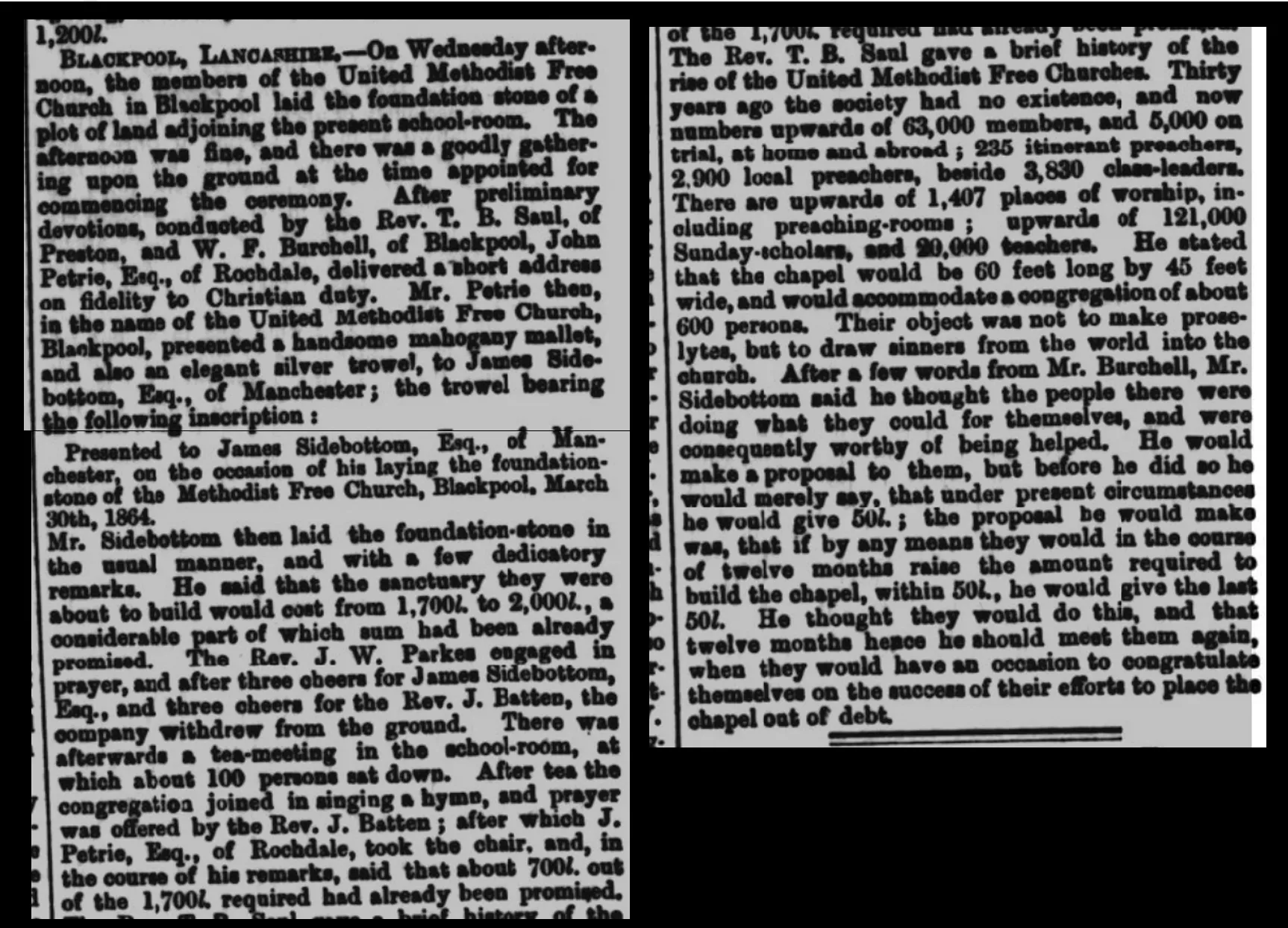Blackpool Methodists - Newspaper Article
Publication: The Preston Chronicle and Lancashire Advertiser
Date: Wednesday April 6 1864

On Wednesday afternoon, the members of the United Methodist Free Church in Blackpool laid the foundation stone of a plot of land adjoining the present schoolroom.
The afternoon was fine, and there was a goodly gathering upon the ground at the time appointed for commencing the ceremony. After preliminary devotions, conducted by the Rev. T. B Saul, of Preston, and W. F. Burchell, of Blackpool, John Petrie esq., of Rochdale, delivered a short address on fidelity to Christian duty. Mr Petrie then, in the name of the United Methodist Free Church, Blackpool, presented a handsome mahogany mallet, and also an elegant silver trowel, to James Sidebottom, esq., of Manchester; the trowel bearing the following inscription:
‘Presented to James Sidebottom, Esq., of Manchester, on the occasion of his laying the foundation stone of the Methodist Free Church, Blackpool, March 30th 1864’
Mr Sidebottom then laid the foundation stone in the usual manner, and with a few dedicatory remarks. He said that the sanctuary they were about to build would cost from 1,700L to 2,000L, a considerable part of which sum had been already promised.
The Rev. J. W. Parkes engaged in prayer, and after three cheers for James Sidebottom esq. and three cheers for the Rev. J Batten, the company withdrew from the ground.
There was afterwards a tea meeting in the schoolroom, at which about 100 persons sat down. After tea the congregation joined in singing a hymn, and prayer was offered by the Rev. J. Batten; after which J. Petrie esq., of Rochdale, took the chair, and, in the course of his remarks, said that about 700L out of the 1,700L required had already been promised.
The Rev. T. B. Saul gave a brief history of the rise of the United Methodist Free Churches. Thirty years ago the society had no existence, and now numbers upwards of 63,000 members, and 5,000 on trial at home and abroad; 235 itinerant preachers, 2,900 local preachers, beside 3830 class leaders. There are upwards of 1,407 places of worship, including preaching rooms; upwards of 121,000 Sunday scholars and 20,000 teachers. He stated that the chapel would be 60 feet long by 45 feet wide, and would accommodate a congregation of about 600 persons. Their object was not to make proselytes, but to draw sinners from the world into the church.
After a few words from Mr Burchell, Mr Sidebottom said he thought the people there were doing what they could for themselves, and were consequently worthy of being helped. He would make a proposal to them, but before he did so he would merely say, that under present circumstances he would give 50L; the proposal he would make was that if by any means they would in the course of twelve months raise the amount required to build the chapel, within 50L, he would give the last 50L. He thought they would do this, and that twelve months hence he should meet them again, when they would have an occasion to congratulate themselves on the success of their efforts to place the chapel out of debt.